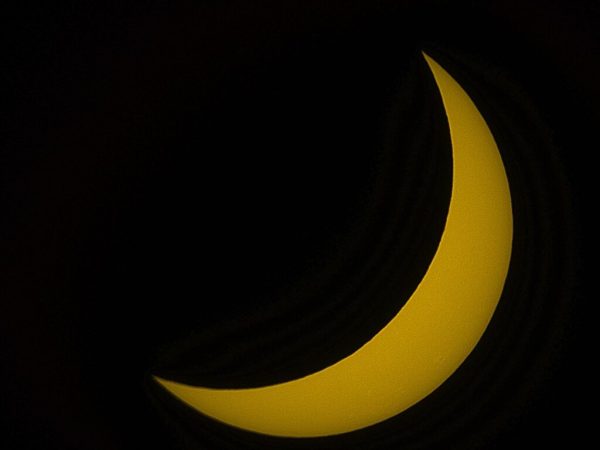In the United States for the first time in 7 years, a total solar eclipse lit the afternoon sky providing students with unique celestial and environmental experience during the school day.
The environmental science class prepared to view the eclipse during their class period to learn about the solar system as well as the environmental impacts of an eclipse. When natural light changes, wildlife changes.
“Experiencing this phenomenon will hopefully lead students in discussions about ecosystems and environmental science. Viewing this solar eclipse can be a memorable and awe-inspiring experience that sparks curiosity about science in general,” environmental science teacher Drew Plumb said.
In order to view the event safely, students will be wearing solar eclipse glasses that are particularity designed for these types of eclipses. The glasses shield away light and radiation that could potentially cause harm to the eyes.

“You should never look directly at the sun. So for the eclipse you should have special glasses. I will be doing some scientific work myself as an amateur astronomer. I will be taking images with my telescope throughout the eclipse,” local astronomer Jeff Walker said.
Every 18 or so months, a solar eclipse happens on Earth; however, the eclipse is not viewable in the United States every time, hence the 7 year wait since the last eclipse. There is a strip across the United States that will have maximum viewing of the eclipse. The strip of the best viewing begins in Texas and goes through the Midwest up through Maine.
“This solar eclipse is different from the one in 2017 primarily due to its path of totality and the regions where it will be visible. The 2017 eclipse had a path of totality that crossed the United States from Oregon to South Carolina, while the April 8th, 2024 eclipse will extend from Mexico through the central and eastern United States and up into eastern Canada. This difference in path affects the duration of totality and visibility. In 2017 the totality of the eclipse was about 87% and the upcoming one will have 94% totality. Carbondale, home of SIU, will have 100% totality, many schools are closed for the day. They also had a 99.5% totality in 2017,” Plumb said.



